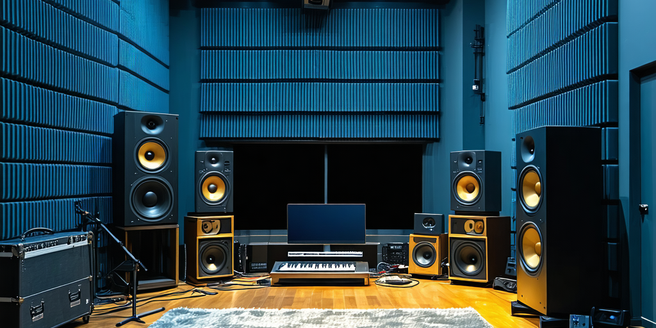Soundproofing Solutions For Noise Reduction

Understanding the Basics of Soundproofing
Soundproofing focuses on reducing unwanted noise by containing sound waves or preventing them from penetrating a space. Materials like mass-loaded vinyl, fiberglass, and acoustic panels are commonly used. Different techniques are often employed based on the specific noise reduction needs of a space. For example, urban environments may require more robust soundproofing solutions compared to rural settings. These materials function by either absorbing sound, blocking it, or a combination of both. Soundproofing techniques might include sealing gaps in doors and windows, enhancing wall density, or utilizing soundproof curtains. The effectiveness of soundproofing is determined by the materials’ Noise Reduction Coefficient (NRC) and Sound Transmission Class (STC) ratings. Understanding these basics helps you make informed decisions about noise control.
Choosing the Right Materials for Noise Reduction
Selecting appropriate materials is crucial for reducing noise effectively. Acoustic panels, soundproof foam, and mass-loaded vinyl are popular choices due to their sound-absorbing properties. Each material has unique features: acoustic panels are ideal for controlling echo, while soundproof foam absorbs ambient noise. It’s important to note that installation can vary in complexity depending on the material chosen. Mass-loaded vinyl effectively blocks sound waves. Before choosing, it is important to evaluate the installation process and maintenance needs of each option. Consider the specific noise challenges of your space and match them with the material’s sound-dampening characteristics. Prioritize materials with high Noise Reduction Coefficient (NRC) and Sound Transmission Class (STC) ratings for optimal results.
DIY Soundproofing Projects for Home Spaces
Taking on DIY soundproofing projects can be rewarding and practical for reducing noise in home spaces. To help get started, research online resources or consult with professionals for specific advice tailored to your needs. You could start by sealing gaps in doors and windows using weatherstripping or caulk to prevent sound leakages. Adding heavy curtains or blinds can also absorb sound and insulate rooms. Consider investing in soundproof paint to add an extra layer of noise reduction to walls. For floors, laying down thick rugs or carpets can significantly decrease noise transmission. Experiment with rearranging furniture to disrupt sound paths and enhance insulation. These straightforward, cost-effective DIY solutions can make a noticeable difference in your home’s acoustic quality.
Professional Soundproofing: When to Call an Expert
While DIY soundproofing has merits, some situations require professional intervention for optimal results. Complex noise issues like those in multi-unit buildings or commercial spaces may demand expert evaluation and installation. Professionals use specialized tools and techniques to assess noise levels and prescribe tailored solutions. They often have access to the latest advancements in soundproofing technology. In addition, their knowledge of acoustic principles ensures that every solution is both effective and efficient. Their expertise also helps in choosing the right materials for specific soundproofing needs. Moreover, they can identify potential problems that untrained individuals might overlook. They ensure that soundproofing materials are correctly installed for maximum efficiency. Opting for professional soundproofing guarantees comprehensive noise reduction solutions, particularly for intricate structural complexities or compliance with building regulations.
Cost-Effective Solutions for Reducing Unwanted Noise
Addressing noise concerns doesn’t have to break the bank; many cost-effective solutions exist. Using materials like door sweeps, draft stoppers, and acoustic foam tiles can significantly reduce noise without excessive costs. Invest in weatherstripping for doors and windows to seal sound leaks. Consider recycling household items such as old blankets or thick rugs as sound buffers. An underappreciated tip is to keep bookshelves full, as books can act as excellent sound absorbers. Rearrange furniture to block and absorb sound more efficiently. Even small changes can make a big difference in reducing noise levels. Priority should be given to areas directly affected by noise sources. These strategies offer affordable, effective ways to enhance your space’s acoustic comfort.